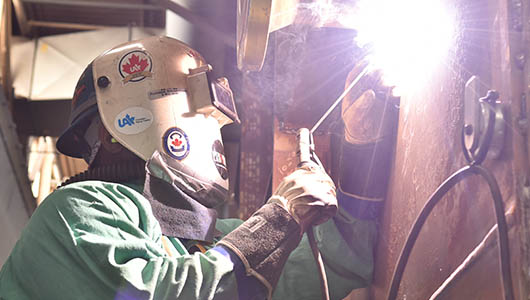Welder
A Welder permanently joins pieces of metal or manufactured parts using metal filler and heat and/or pressure, builds structures, repairs broken or cracked parts according to specifications and carries out special processes, such as welding studs. Specifically, a Welder:

Apprenticeship program
The Welder (456A) apprenticeship program consists of on-the-job and in-school training. The program typically takes three years to complete and consists of:
- 5,280 hours of on-the-job training/work experience
- 720 hours of in-school training
On-the-job training
A Welder apprenticeship involves practical training provided on-the-job by a skilled worker or trainer. The skills or competencies to be developed through this training include:
- using and maintaining tools and equipment
- using and maintaining material handling and safety equipment
- maintaining welding equipment and supplies
- preparing work site
- laying out, cutting and forming metals to specification
In-school training
A Welder apprenticeship includes three levels of theoretical training delivered in a classroom, which includes subjects such as:
- applied safety procedures
- reading of blueprints and welding symbols
- material and process quality
- welding theory
- shielded metal arc welding
